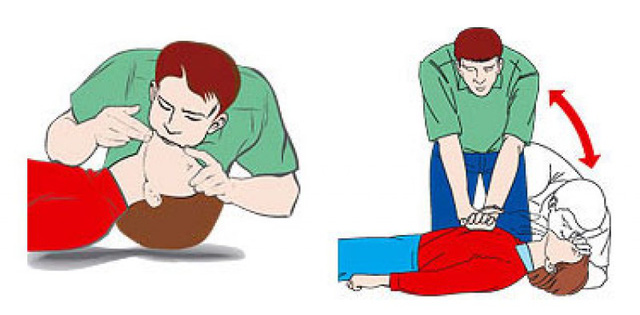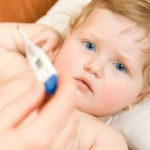
The best artificial respiration to get more oxygen into the brain when a child is drowning. Illustrative Image
Death from falling into a water tank
Emergency Department of Children’s Hospital 1, Ho Chi Minh City recently received a case of a 17-month-old child brought to the emergency department due to drowning. Earlier, the child played with water in the house and accidentally fell head-first into the water tank. When the family discovered the child turned pale, they immediately took the child to the emergency department. However, the family forgot to perform initial first aid measures. When he arrived at the hospital, the patient had stopped breathing, and despite the doctors’ efforts to save him, the child died.
Previously, a 13-month-old girl was also hospitalized in a coma and with brain edema due to water suffocation. According to her family, the baby had just learned to walk, run, and leaned her head into a water bucket containing just over 20 cm of water. When admitted to the hospital, the baby was in a critical condition with cardiac arrest and dilated pupils. Despite intensive care, the baby did not recover and died two days later.
The Children’s Department of Bach Mai Hospital has also received and treated many cases of children drowning. In particular, many children drown right in their own homes. Most of the children are discovered late, and the initial first aid is not done correctly, leading to a high mortality rate and severe brain sequelae.
For young children who have just learned to walk, the danger is even greater. Children can fall and immerse their heads in water containers such as buckets, basins, and tubs without being able to stand up or escape on their own. Also, the weight of the child is not enough to tip over the water container. Therefore, families should cover tightly water containers and empty the bathtub when not in use.
Associate Professor Dr. Nguyen Tien Dung, former Head of the Children’s Department (Bach Mai Hospital), said that children can suffocate at home by falling into water tanks, basins, toilets, or falling into ponds and rivers while playing and running along the banks. This accident is more common in the summer.
Drowning is a form of suffocation due to water entering the lungs or respiratory tract obstruction due to laryngospasm when the victim is submerged in water. When drowning occurs, the victim stops breathing and the heart beats slower, leading to a lack of oxygen in the blood and death. Many cases result in long-term sequelae, affecting the child’s motor skills, speech, and intelligence.
First golden minutes of first aid
According to Dr. Dinh Tan Phuong (Children’s Hospital 1), when drowning occurs, the risk of death or severe neurological damage in children is very high. However, if the victim receives timely, active, and proper first aid, they have a chance of survival. Therefore, initial first aid done correctly is extremely important, and parents need to stay calm to perform it.
The golden time for rescuing a drowning child is only 4 minutes. During this time, family members should actively perform chest compressions and rescue breaths to increase the oxygen supply to the brain. After 4 minutes, the child will be in an extremely dangerous condition. After 10 minutes, the child will suffer from brain death, even if they are rescued, they are likely to live a vegetative life due to brain damage.
Dr. Nguyen Tien Dung advises that when a child is drowning, the first steps should be taken promptly:
– Step 1: Quickly remove the victim from the water in any way possible, place the victim in a well-ventilated area, and keep them warm.
– Step 2: The rescuer calls the child. If the child does not respond or, when observing the chest, is not moving, it means the child has stopped breathing. At this point, quickly perform artificial respiration: Place the victim on their back and hang their neck bent to the left side, use gauze or cloth to wipe off any dirt, debris, or foreign objects from the victim’s mouth and nose. Then, the rescuer performs rescue breaths for the victim. After 5 rescue breaths, if the heart is still not beating, the next step is to perform external chest compression.
– Step 3: After performing rescue breaths, if the heartbeat still does not recover, the rescuer needs to perform external chest compression and rescue breaths for the child. Place the heel of one hand on the lower half of the breastbone, perform 30 chest compressions followed by 2 rescue breaths. If there are two rescuers, the ratio is 15:1.
People should note that when giving rescue breaths to young children, the person blowing needs to seal their mouth tightly to the child’s nose and mouth. For older children, the mouth should be sealed around the child’s mouth, and the person should use their hand to cover the child’s nose to prevent breath from escaping. Blow two rescue breaths continuously, each for about 3 seconds. Chest compressions and rescue breaths should be performed for about 5-10 minutes.
– Step 4: After the victim regains consciousness, they will vomit a lot of water, so they need to be placed in a tilted position, with the pillows elevated on both sides of the shoulders, to widen the clothes to prevent choking.
– Step 5: Quickly transfer to a medical facility even if the victim appears normal or has fully recovered after first aid because the risk of secondary respiratory distress may occur a few hours after the water incident. During transportation, first aid measures (if needed) should continue, and the victim should be kept warm.
Experts also warn that mistakes in first aid can cause children to miss the chance of survival. Parents should never attempt folk first aid measures such as rolling the child over a fire or carrying them upside down to shock them into vomiting. Because drowning is a state of cardiac arrest and respiratory arrest, the most important first aid is to find a way to get blood to the brain, restore the circulatory system for the patient.
Reversing a drowning victim and running a few laps to dispel water has no effect. Typically, the amount of water entering the lungs is minimal, not as much as people think. This water will be expelled when the victim resumes breathing. Doing so delays the time for rescue breaths and increases the risk of inhaling water into the lungs, and may inadvertently cause dangerous injuries to the victim such as neck injuries.
In addition, people should not press the child’s abdomen because it can cause the contents of the stomach to enter the lungs, causing pneumonia and making treatment difficult.
Tips for Parents on Dealing with Common Ailments in Young Children
Winter can be a particularly hard time for little ones when it comes to keeping healthy. With the decrease in temperature and shorter days, minor illnesses that often affect children can start to present themselves. To ensure your child remains in good health and to learn how to tackle minor ailments efficiently, here are 10 tips for parents to take into consideration.


































